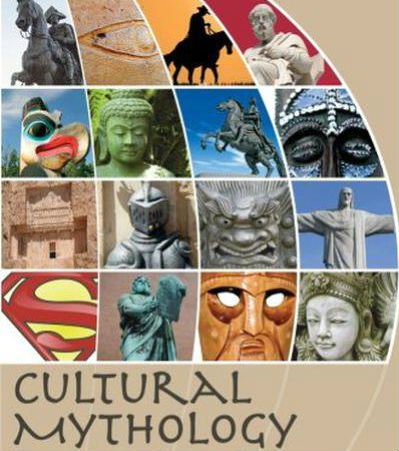 Our approach to The Hero’s Journey in myth was in several phases. I am a great believer in making posters to show student thinking. By limiting what goes on each poster, students become more focused on what they need to take from the story. It also makes for much easier cross-analysis.
Our approach to The Hero’s Journey in myth was in several phases. I am a great believer in making posters to show student thinking. By limiting what goes on each poster, students become more focused on what they need to take from the story. It also makes for much easier cross-analysis.
Phase 1: the whole class read the story of Hercules and we then analyzed it for the Hero’s Journey pattern. Students identified the steps and outlined their ideas on group posters. The groups worked as follows:
– group 1: the Departure
The next four groups worked on the Initiation Stage. They identified heroic traits in Hercules, as well as acknowledged any mentors/helpers who may have aided him in completing each task.
– group 2: Labors 1-3
– group 3: Labors 4-6
– group 4: Labors 7-9
– group 5: Labors 10-12
– group 6: the Return Stage
Students shared their posters and we made a large list of traits that the Ancient Greeks seemed to admire in their heroes. As students gave their list of attributes, they had to come up with a different trait for each labor. In this way, we ended up with twelve for Hercules.
Phase 2: The Hero’s Journey in other Cultures
Each group was given a story from another culture to analyze for the Hero’s Journey pattern. Like we did with Hercules, the students made posters that showed the hero’s attributes. The posters also had to depict the hero’s apotheosis.
Group 1: Prometheus
Group 2: Kutoyis
Group 3: Percival and Gawain
Group 4: Faust
Group 5: Pele. Hiiaku and Luhau
Group 6: Gilgamesh
Once again, when the groups shared their posters, everyone in the class made a list of the hero’s attributes.
Phase 3: Back to Greece
This time I collapsed the six groups into three, and each group read a full-length version of the stories of three Greek heroes: Theseus, Perseus, and Jason. Like we did with the other stories, groups analyzed, made posters, and shared their findings. Again, we made a list of heroic attributes for each.
Phase 4: Ariadne’s Thread (the Critical Lens Essay)
Analysis Essay: Cultural Mythology Unit
Now that you have read a variety of myths and legends, and have generated a list of heroic attributes that reflect the values of the culture that presents the each story, it is time to show me what you have learned about the significance of cultural mythology.
For this essay, you will read, highlight and annotate the pages from the Mythic Journeys Study Guide provided to you. You will then select one of the six quotations to be the focal point of your essay; however, group members must each choose different quotations.
All of the quotations have something to do with respecting and understanding the tales of other cultures beyond the one a person has been brought up in. Although stories may differ, certain heroic attributes are common among cultures (remember, we have combed through each of these stories making lists of attributes… use that list now!).
This will be your introduction:
Once you have selected your quotation, you must explain what the speaker meant through his/her words. What is the underlying message he/she is trying to get across? How does that relate to the preservation of myth? Think about a central theme/idea that runs throughout several of the stories that we have read in class that also supports the speaker’s message. Once you have determined that common thread, you then have a focus for your thesis statement.
The focus in your thesis statement will be the thread that runs throughout the body of your essay (like Ariadne’s thread in the labyrinth—be sure to follow it so that you don’t get lost!).
There will be at least three body paragraphs (you are always welcome to expand on the topic by writing more, if you are so inclined):
- How does that thread run through the story of Hercules?
- How does that thread run through one of the tales we read in groups? (Kutoyis, Pele/Hiaku, Percival/Gawain, Faust, Prometheus, or Gilgamesh—you may choose any of the stories, not just the one you read as a group)
- How does that thread run through the other Greek tales we read? (Perseus, Theseus, or Jason—again, you may choose any of the stories, not just the one you read in your group)
You must make sure that the stories you select not only relate to the quotation in some significant way, but also support the thread that you are leaving as a trail into the assignment. You have lists of heroic attributes at your fingertips, as well as the stories themselves to use as reference.
Do not forget to embed quotations into your paragraphs as support for your thesis and CITE APPROPRIATELY!! Do NOT summarize the tales; analyze how they support the main idea of the quotation you have selected.
For your conclusion, you must return to the quotation and the lessons that can be taken from it and from the preservation of the study of myth.
